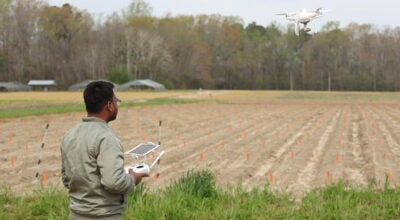Army probes TCC property
Published 12:27 am Tuesday, April 3, 2012
The U.S. Corps of Engineers has identified new areas of possible munitions contamination at the former North Suffolk military depot now earmarked for a multi-million dollar makeover.
Jeff Zoeckler, former Nansemond Ordnance Depot project manager for the corps’ Norfolk division, said the areas were revealed after geophysical mapping of the site’s shoreline last year.
“The shoreline along the property is heavily eroding, especially during events like hurricanes and nor’easters, so we had couple of areas where some items had been exposed during recent storm events,” Zoeckler said.
“So that caused us to go back and say, ‘Well, we really want to look at the shoreline as a whole.”
A 150-foot swath of 50 acres of shoreline was mapped, Zoeckler said, identifying “several areas” which the corps now plans to “intrusively investigate.”
“We’re putting the scope together now, and it’ll be contracted out later this year,” he said, adding the work, involving backhoes and shovels, will occur late 2012, possibly extending into 2013.
According to the corps website, the old ordnance depot was used for the storage and shipment of various munitions during both world wars.
At the confluence of the James and Nansemond rivers — prime real estate — the 975-acre former depot now comprises the former TCC property, the Virginia Department of Transportation, Hampton Roads Sanitation District and various industrial facilities.
TCC opened what it called its Portsmouth Campus there in 1968, on land bequeathed by Frederick W. Beazley and the Beazley Foundation, before moving to a new Portsmouth location in 2010.
TCC and the city of Suffolk, which owns a 55-acre parcel incorporated in the footprint, are preparing to redevelop 444 acres of the windswept land, which faces the watery site of the USS Monitor and CSS Virginia Civil War clash.
The Urban Land Institute in 2011 presented plans for an apartment, retail and office complex incorporating an open-air amphitheater. According to Tidewater Community College Real Estate Foundation Executive Director Douglas Smith, the start of construction remains several years in the future, however.
A real estate consultant will help review the plans’ market potential, Smith said. “It’s really figuring out the market demand potential of this,” he said.
The foundation will also look more closely at some engineering aspects of the plan, Smith added, saying it could be 2018 before the process is complete.
“The community college and foundation on their behalf looks at this as a legacy property in terms of land use and (the) revenue it can generate for the city of Suffolk and the community college,” he said. “So it’s really important that we do this well, and in an appropriate manner.”
Corps engineers have removed from the site “millions of pounds of debris and associated soil,” Zoeckler said, and it is hoped the so-called intrusive investigation will not uncover any large amount of additional work.
“The purpose is to open up the areas and determine what caused that signature in the geophysical mapping, what caused that anomaly,” he said. “Is it just a piece of metal that was buried at some point? Or is it munitions-related?”
The several potential areas that may contain metal, possibly munitions, vary in size from “a few feet wide” to one possibly “much larger than that.”
“There were a couple of areas that were still under investigation … but it was thought that the majority of munitions removal was complete, and I still think that’s true,” Zoeckler said.






